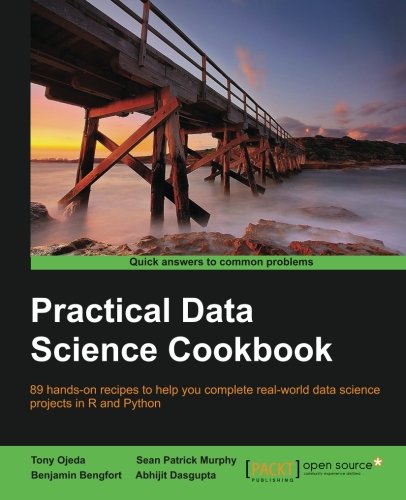

Most ebook files are in PDF format, so you can easily read them using various software such as Foxit Reader or directly on the Google Chrome browser.
Some ebook files are released by publishers in other formats such as .awz, .mobi, .epub, .fb2, etc. You may need to install specific software to read these formats on mobile/PC, such as Calibre.
Please read the tutorial at this link: https://ebookbell.com/faq
We offer FREE conversion to the popular formats you request; however, this may take some time. Therefore, right after payment, please email us, and we will try to provide the service as quickly as possible.
For some exceptional file formats or broken links (if any), please refrain from opening any disputes. Instead, email us first, and we will try to assist within a maximum of 6 hours.
EbookBell Team

0.0
0 reviews89 hands-on recipes to help you complete real-world data science projects in R and Python
About This BookIf you are an aspiring data scientist who wants to learn data science and numerical programming concepts through hands-on, real-world project examples, this is the book for you. Whether you are brand new to data science or you are a seasoned expert, you will benefit from learning about the structure of data science projects, the steps in the data science pipeline, and the programming examples presented in this book. Since the book is formatted to walk you through the projects with examples and explanations along the way, no prior programming experience is required.
In DetailAs increasing amounts of data is generated each year, the need to analyze and operationalize it is more important than ever. Companies that know what to do with their data will have a competitive advantage over companies that don't, and this will drive a higher demand for knowledgeable and competent data professionals.
Starting with the basics, this book will cover how to set up your numerical programming environment, introduce you to the data science pipeline (an iterative process by which data science projects are completed), and guide you through several data projects in a step-by-step format. By sequentially working through the steps in each chapter, you will quickly familiarize yourself with the process and learn how to apply it to a variety of situations with examples in the two most popular programming languages for data analysis—R and Python.